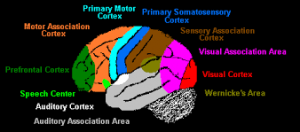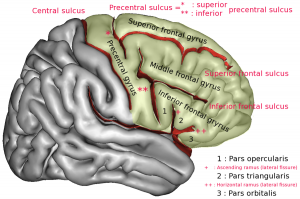Article Composed by Shunda Wallace

Hypothesis One Proven To Be Inaccurate:
People with right sided asymmetrical brains are more talented and particularly more gifted in music and music skills
Hypothesis Two Proven to Be Inaccurate:
People with left sided asymmetrical brains are more talented and particularly more gifted in music and music skills.
What neuroscientists found however is that the group of musicians (or sub-group of musicians) that were more lateralized to the left side dominance did have absolute pitch. Also known as perfect pitch. Contrary to popular belief, perfect pitch is not the ability to sing or play in tune. Perfect pitch is the ability to recall a note heard or notes heard when played or sang (without seeing the notes).
Subsequently, researchers began to change the focus of their hypothesis from a right side/left side dominance theory to looking into particular systems and the inter-connectivity between those systems across numerous studies. This would consist of four systems of the brain: the auditory cortex (hearing), the visual cortex (sight) and the motor cortex (movement), the left frontal lobe (language dominant hemisphere). All used to play and instrument and sing.
These four systems are located on both the right and the left hemispheres of the brain.
Auditory Cortex: Left and Right Hemisphere
Visual Cortex: Left and Right Hemisphere
Language Dominant: Left Hemisphere
Motor System: Left and Right Hemisphere
Let’s take a look at these hemispheres in the brain

Now lets discuss the left inferior frontal gurus (IFG) of the brain. The IFG is a region of the brain that sits in front of the motor system and it has rich inter-connectivity between both right and left hemispheres of the brain (auditory and motor). During the research it was determined that this region of the brain is more developed in adult musicians than in adult’s that were not musicians. Hence the inter connectivity between systems.

The study has determined that music making (practicing by way of playing instruments and singing) changes the structure and function of these multi-modal integration systems in the brain which creates a ripple effect that expands these systems by-way-of the IFG. The more language, hearing, speech and vision were utilized by-way-of practicing a musical instrument or singing, the more developed these particular systems in the brain became.
Hence the brains of musicians are more developed than the brains of non-musicians (or more specifically that particular region of the brain). Subsequently these researchers (neuroscientists) have coined the phrase “musicians are auditory motor athletes”.
Ms. Wallace holds a Bachelors of Music in Music Management from William Paterson University, Masters Degree in Jazz Arranging and Orchestration from William Paterson University in addition to an Advanced Level Certification in Music Therapy from Montclair State University.
As a researcher Ms. Wallace’s research on Schizophrenia and Depression was published in Montclair State Universities “Forward Thinking” newsletter and presented/nominated for an award at Montclair State’s 2013 Research Symposium.